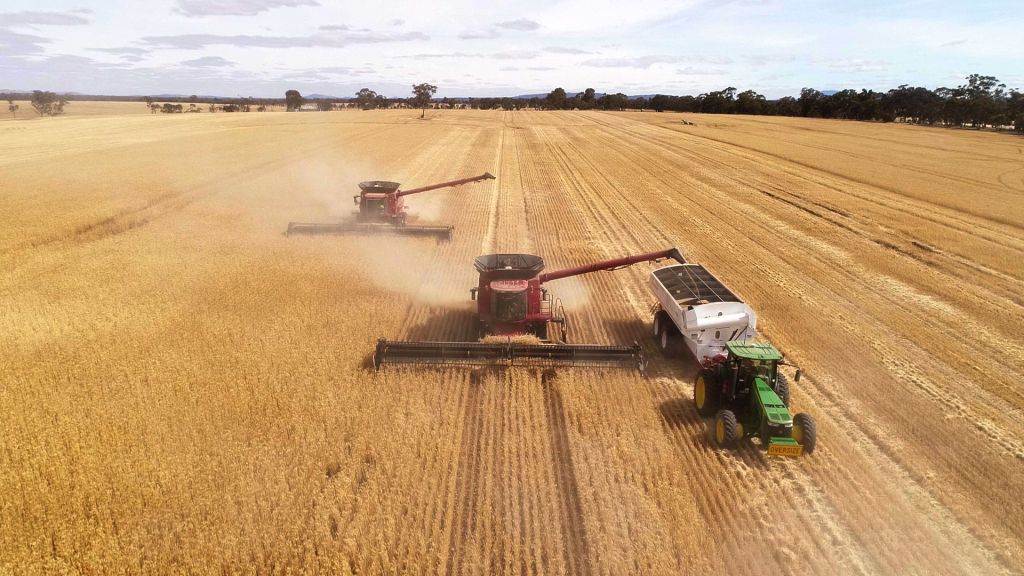As the farming community in New South Wales and regional Victoria prepares for another productive season, there’s one essential step that should be a top priority: pre-season servicing of your hay and harvesting equipment.
With the upcoming demands of the farming cycle, ensuring that your machinery is primed for peak performance is imperative. Your equipment isn’t just a set of tools; it forms the foundation of your operation, allowing you to navigate the challenges of the land. A breakdown during this critical period is not ideal, so prioritising the right equipment care will help mitigate risks, saving valuable time and safeguarding your investments.
Explore the intricacies of equipment care and pre-season servicing and why it should be an integral part of every farmer’s routine, especially the farmers in NSW and regional Victoria. Gain insights into effective strategies, valuable tips and best practices to ensure that your machinery thrives despite the adversities of changing weather conditions.
Maximising Performance and Efficiency
Your hay and harvesting equipment is the backbone of your farming operation. Pre-season servicing allows you to identify and address any underlying issues, ensuring that your machinery operates at its peak performance when it matters the most. Regular maintenance and servicing can lead to improved fuel efficiency, reduced downtime and increased productivity in the field.
Identifying and Addressing Wear and Tear
Farming equipment goes through a lot during the busy harvest season. Pre-season servicing provides an opportunity to assess the wear and tear that occurred during the previous season. By replacing worn-out parts and addressing minor issues early, you can prevent major breakdowns in the middle of critical operations. Think of it as a health check for your machines. If you spot a worn-out part, swapping it now can save you headaches down the line. So, as we are transitioning to the next season, take a moment to give your farming equipment some TLC.
Safety First
Safety is paramount on the farm. Well-maintained equipment contributes to a safer working environment for you and your team. During pre-season servicing, important safety features can be thoroughly inspected and tested to ensure they are functioning correctly. Everything from brakes to emergency shut offs can and should be inspected and tested to make sure they’re in top working condition. This isn’t just a box-ticking exercise; it’s about keeping you and your team out of harm’s way. A malfunctioning safety feature during a critical operation could lead to accidents and injuries, and nobody wants that! By catching and fixing these issues early, you’re putting preventative measures in place to prevent further complications.
Tailored Servicing for Different Equipment
Each aspect of farming requires its own unique level of consideration and care. Just as every crop requires a certain type of fertiliser mix, different farming equipment has different servicing needs. Whether it’s your trusty tractor, reliable hay baler, or hardworking combine, each piece requires specific care to keep it running smoothly. Once more, drawing on the analogy, just as you wouldn’t irrigate your wheat in the same manner as your potatoes, you wouldn’t maintain your tractor in the same way you care for your hay baler. Professional servicing ensures that each piece of equipment is properly adjusted, lubricated and fine-tuned for optimal performance – it’s never a one-size-fits-all approach.
Pre-season servicing of your hay and harvesting equipment is not just a process, it’s a vital step in your journey towards a successful farming season. Beyond the immediate benefits of optimising performance, enhancing efficiency and bolstering safety, it’s an investment in the long-term productivity and longevity of your farming operation. Your farm’s future success hinges on the care you provide to your equipment today.
For all your farming needs, services and supplies, contact Watson Agriculture. We’re dedicated to enhancing your farming experience and ensuring your success.

